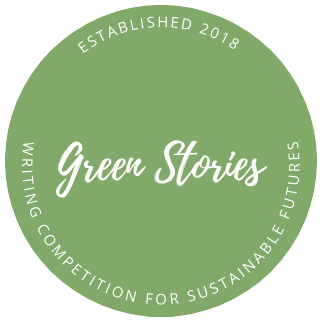Social learning theory
According to social learning theory (Bandura, 1971), we learn by observing and imitating others. Psychological research suggest that role models can be more important in affecting attitudes and values than rational processing of information, as they tap into the way in which our brain processes information and learns. For example, Petty and Cacioppo (1986) proposed two key routes by which we learn and develop attitudes, known as the ‘elaboration likelihood model’. The first is a ‘central route’ where we consciously take in information, assess its value and decide what to believe. The second route is the less conscious ‘peripheral’ route, affected by factors such as the attractiveness of the person presenting the message, or associated emotional cues. This method of assessing information is less rational as it is affected by factors that are not logically related to the quality or credibility of the message. Nonetheless it can be just as powerful in affecting attitudes, if not more, than the more rational ‘central’ route.
Role models
Cruess et al., (2008) draw attention to the means by which the observed behaviours and attitudes of role models are converted into belief patterns and behaviours and caution that we should be aware of the conscious and unconscious components of learning from role modelling.
Fictional characters can act as role models, and because their impacts upon our values and attitudes operate through subconscious processes, we are more vulnerable to their influence, for better or worse. For example. Slater and Rouner (2002) report that absorption in fictional narratives reduces resistance to underlying messages. This is explained with reference to the extended elaboration likelihood model which proposes that immersion in a dramatic story makes viewers/readers less critical and less likely to challenge the underlying message. Additionally, emotional identification with the aims of protagonist can lead readers to adopt the protagonist’s views as their own (Busselle & Bilandzic, 2008; Hoeken, Kolthoff, & Sanders, 2016). There is evidence also of an ‘absolute sleeper effect’ whereby the persuasive effects of the message embedded in the fictional narrative persist over time and become integrated into real-world knowledge (Appel & Richter, 2007). Such effects may occur through the process of narrative transportation, whereby immersion in a story line amplifies story-consistent beliefs and values (Green & Brock, 2000).
Green Stories approach
Much of the research carried out on fictional role models, indicates that attractive characters behaving in sustainable ways that readers/viewers can identify with are the most effective way for stories to promote sustainable lifestyles (Baden, 2018, 2019, 2020).
Currently, there are few attractive ‘green’ characters on our screens and in our books. If there is an environmentally conscious person in a story, he/she is more likely to be presented as preachy and annoying than as a likeable character we can relate to. Even worse, many of the most popular series on our screens have characters whose lifestyles of fast fashion, fast cars and excessive consumption have adverse impacts upon our planet.
This is why the Green Stories project aims to harness the power of fictional role models to promote sustainable behaviours and values. The literature indicates that an effective approach is to increase feelings of empowerment by incorporating solutions into stories (Baden, 2019; Baden, 2020). There is evidence that the feeling of narrative transportation and identification with strong characters that solve problems increases the feeling that one can make a difference. Storytelling provides a familiar and engaging mode of transmission that provides archetypal frames to process ideas (Sugiyama, 1996). Furthermore, stories can allow complex concepts to be explained within their natural context that allows the inter-relationships e.g. between consumption and waste, to be played out organically as part of a plot. Narrative and plot devices can also allow readers to identify with the moral choices being played out and identify with characters as they explore sustainability issues in their personal lives.
The writing competitions encourage entrants to incorporate positive role models into their stories, and the video competition aims to encourage writers to move away from characters with lifestyles of excessive consumption that are implicitly promoting environmentally harmful ways of life.
References
Appel, M., & Richter, T. (2007). Persuasive effects of fictional narratives increase over time. Media Psychology, 10(1), 113-134.Bandura, Albert. “Social learning theory. Morristown.” (1971).
Baden, D. (2014). Look on the bright side: a comparison of positive and negative role models in business ethics education. Academy of Management Learning & Education, 13(2), 154-170. doi:10.5465/amle.2012.0251
Baden, D.: 2018, ‘Environmental storytelling can help spread big ideas for saving the planet’, The Conversation, 21st December,
Baden, D., C. Burns, A. Jahan and L. Bartlett: 2018, ‘Engaging people in sustainability via stories’. British Academy of Management Bristol, UK).
Baden, D.: 2019, ‘Solution focused stories are more effective than catastrophic stories in motivating pro-environmental intentions ‘, Ecopsychology 11 (4), 254-263.
Baden, D.: 2020, ‘Which Work Best: Cautionary Tales or Positive Role Models?’, In Molthan-hill, P., H. Luna, T. Wall, H. Puntha and D. Baden (Eds.), Storytelling for Sustainability in Higher Education: An Educator’s Handbook (Routledge, Abingdon)
Baden, D (2022) https://theconversation.com/positive-fictional-role-models-the-missing-ingredient-to-fight-the-climate-crisis-177684
Busselle, R., & Bilandzic, H. (2008). Fictionality and perceived realism in experiencing stories: A model of narrative comprehension and engagement. Communication theory, 18(2), 255-280.
Green, M. C., & Brock, T. C. (2000). The role of transportation in the persuasiveness of public narratives. Journal of personality and social psychology, 79(5), 701.
Hoeken, H., Kolthoff, M., & Sanders, J. (2016). Story perspective and character similarity as drivers of identification and narrative persuasion. Human communication research, 42(2), 292-311.
Petty, R. E., & Cacioppo, J. T. (1986). The elaboration likelihood model of persuasion. In Communication and persuasion (pp. 1-24). Springer, New York, NY.
Slater, M. D., Rouner, D., & Long, M. (2006). Television dramas and support for controversial public policies: Effects and mechanisms. Journal of Communication, 56(2), 235-252.
Sugiyama, M. S. (1996). On the origins of narrative. Human nature, 7(4), 403-425.
